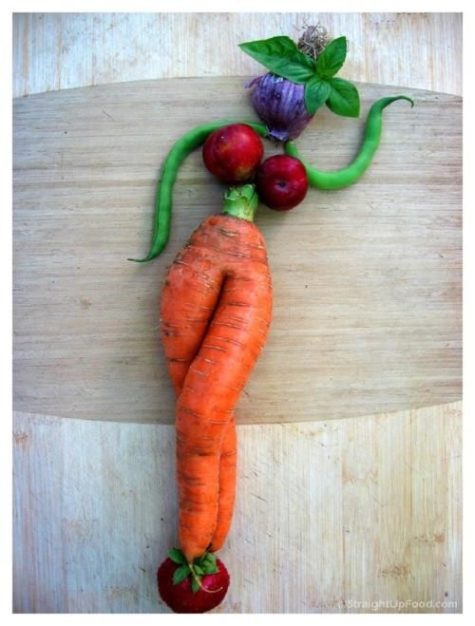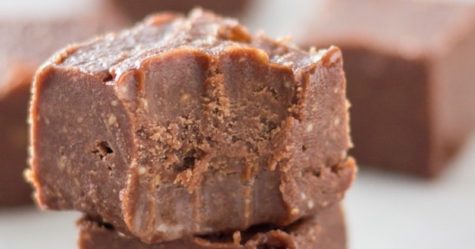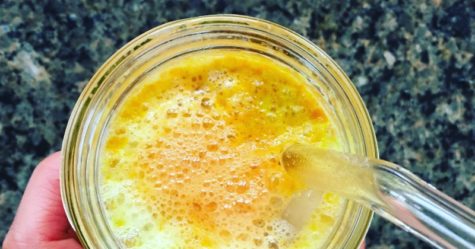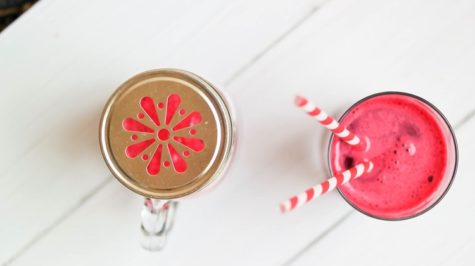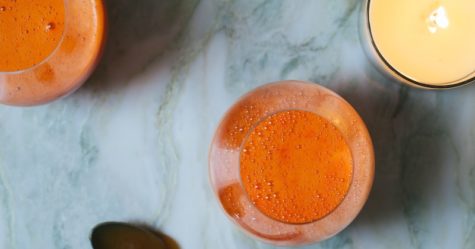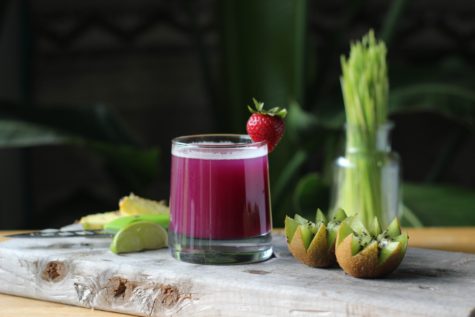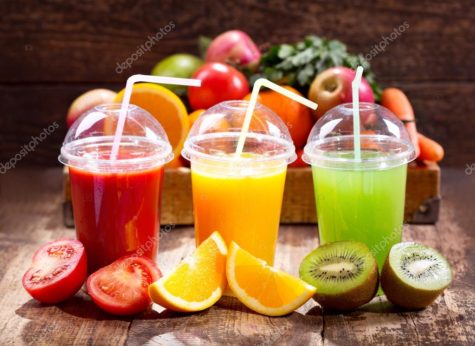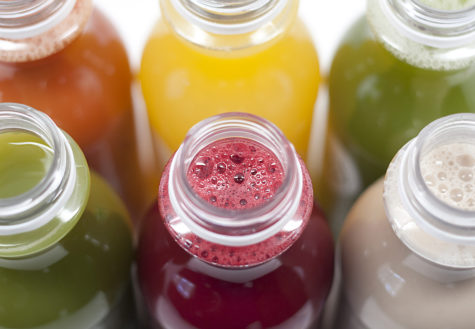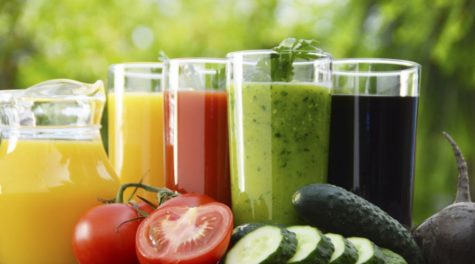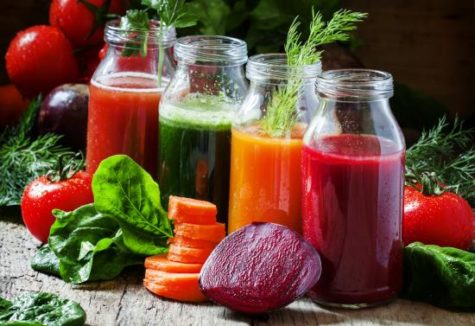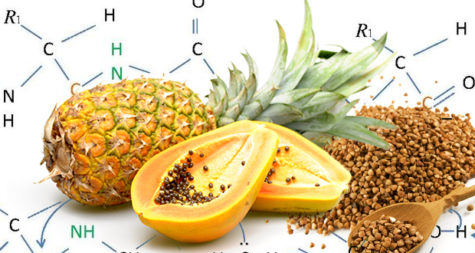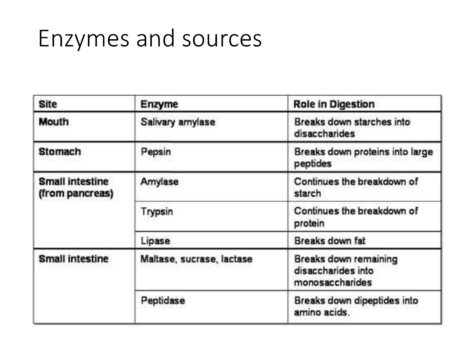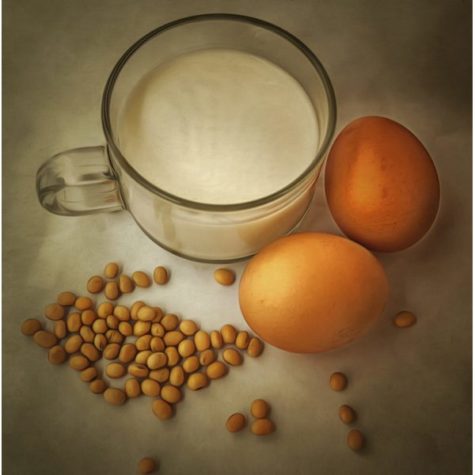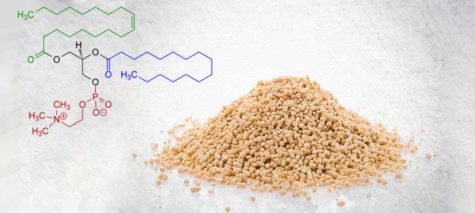Monthly Archives: November 2018
How To Make Molasses
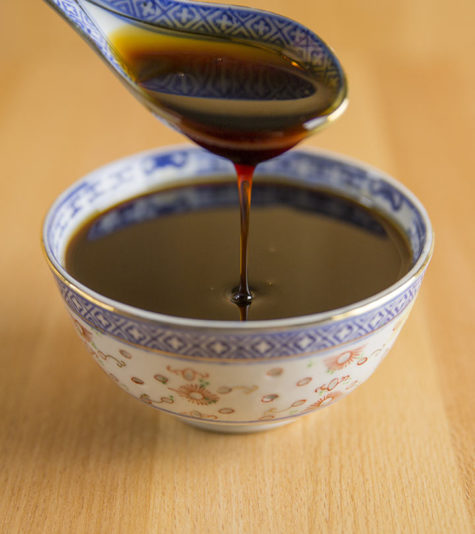
Take pumpkins, boil them, press the juice out of them, and boil the juice to a proper consistence. There is nothing else necessary. The author of this book, John George Hohman has tasted this molasses, thinking it was the genuine kind, until the people of the house told him what it was.
Beautifying Raw Foods That Also Improve Immunity
Some of the most beautifying raw foods on the planet are also some of the best you can eat for optimal immunity, along with increased vitality and strength. That’s because many raw foods are high in minerals which are the micronutrients that your body absolutely must have for optimal health.
Without enough minerals, our skin, mood, and immunity all suffer greatly. They keep our bodies functioning on a deeper, cellular level, and the antioxidants found in many raw foods also help improve our beauty and defense mechanisms against various types of disease.
Several vitamins are also important for natural beauty and optimal immunity. So check out these 10 beautifying raw foods that are packed with nutrients that will improve your hair, skin, nails, immune system, and even your digestion and brain health too!
Pineapple
Would you believe that pineapple is one of the best sources of Vitamin C you can eat?
Pineapple’s Vitamin C content rivals that of most all fruits. The delicious sweet fruit contains over 100 percent of your daily Vitamin C needs along with high levels of the enzyme bromelain which helps break down proteins in the body. These properties not only improve digestion and immunity, but they also reduce acidity in the body which increases your body’s alkalinity to prevent inflammation.
Fresh or frozen pineapple is the kind of pineapple you’ll want to consume, though. Avoid the canned or dried varieties which have been more heavily processed and often have added sugars and/or oils. Use frozen or fresh pineapple in a smoothie, enjoy it as a snack, or pair it with a morning bowl of overnight oats if you like.
Camu Camu
Camu camu is a superfood that’s so beneficial for women that it’s even considered to be a medicinal herb in some cultures. The fruit comes from the Amazon and is the highest source of Vitamin C per serving on the planet. It’s also a good source of amino acids and several trace minerals.
Because of its high Vitamin C and amino acid content, camu berry is amazing for your skin, improving anxiety, and it can help aid in digestion. Camu camu also has antiviral properties which can help fight off candida and other fungal-related infections that demean your health.
The fruit is sold as a freeze-dried, raw powder here in the United States and it adds a sharp, tangy texture to smoothies. It pairs well with pineapple, banana, berries, and cacao, or it can be used in raw desserts, cookies, or added on top of a bowl of overnight oats. Just be sure not to heat camu camu since Vitamin C is heat-sensitive.
Raw Cacao
Speaking of cacao, it’s amazing for your health and beauty. Raw cacao is high in sulfur, a beauty-boosting mineral that also helps detoxify the liver.
Raw cacao is also high a potent source of antioxidants, flavonoids, and other minerals such as iron and magnesium. Cacao is even high in copper and zinc which improve your immunity and the strength of your blood.
Just be sure to go for the good stuff when you consume raw chocolate. You’ll want to avoid chocolate that is high in sugar and eat it raw and unsweetened, or choose dark chocolate with at least 90 percent cacao content. Or you can have raw, superfood chocolate—your choice.
Carrots
Like other orange-colored fruits and veggies, carrots are loaded with beta-carotene which is a precursor to Vitamin A, a natural beauty and immunity-boosting vitamin. Carrots are also one of the best sources of Vitamin C among all vegetables, and they’re high in water, fiber, and low in sugar.
You can eat carrots raw or cooked, but do be mindful most of the Vitamin C found in carrots is lost during the cooking process since Vitamin C is heat-sensitive. For this reason, to retain all the benefits carrots have to offer, be sure to eat them (and other fruits and veggies) in raw form whenever possible.
Carrots are also great for hormone balance, filling you up, and they can even be added to smoothies for a boost of nutrition and natural sweetness!
Acai Berry
Goji berries are an incredibly popular berry that’s great for your skin, and acai berry is another one of the top berries to consume for beauty and immunity. Acai berry is an Amazonian superfood that is a powerful source of omega-3 fatty acids which protect your brain, skin, heart, lungs, and your nervous system.
Acai is also a wonderful source of amino acids and several key minerals that improve your strength and immunity. It’s also low in sugar which makes it great for your blood sugar levels.
Acai fruit is sold as a raw, freeze-dried powder, so consume whichever you prefer. If it’s your first time using acai, pair it with blueberries and raw cacao where it takes on an especially lovely flavor.
Raw Almonds
Raw almonds are well-known for their high-protein content, but they’re also excellent for your skin. Almonds are a top food to consume to improve natural beauty because they’re rich in Vitamin E, magnesium, iron, zinc, copper, monounsaturated fats, and fiber, which slows down the release of insulin in your body.
Almonds also support collagen levels in the skin which can help to prevent and reduce fine lines and wrinkles. Almonds even improve the body’s response to stress, which can trigger inflammation if kept unchecked, and they’re alkaline foods when consumed in 100 percent raw form.
Dark Cherries
Dark, sweet cherries should be one of the number one foods you eat to beautify your skin and improve your immunity. Cherries contain dark compounds of antioxidants that promote longevity and decrease inflammation in the body and are very similar in nutrition to berries.
Dark cherries can be bought fresh or frozen, and they pair wonderfully with cacao, greens, berries, and other superfoods in a smoothie. Dark, sweet cherries can also decrease joint pain, improve sleep, and help protect the heart and skin from oxidative stress.
Romaine Lettuce
That’s right, one of the most simple greens that’s not kale is also one of the best you can eat! Sweet and hydrating romaine lettuce is incredible for your beauty and immunity because it’s one of the top sources of Vitamin C among all greens, it’s high in water to hydrate the cells, and it’s even a natural source of omega-3 fatty acids, believe it or not.
Use romaine in raw juices, smoothies, or make a huge salad with it and enjoy its naturally hydrating and beautifying benefits!
Pumpkin Seeds
If your skin and nails could use some help quickly, add some pumpkin seeds to your diet and consider yourself brand new! Pumpkin seeds are one of the best sources of zinc, protein and iron, three nutrients that improve skin health, blood sugar levels, immunity, and energy levels extremely quickly.
Pumpkin seeds can even improve your mood and blood sugar levels since they’re one of the best sources of magnesium among all nuts and seeds. And, they’re one of the best seeds you can eat to improve alkalinity due to their naturally high chlorophyll content.
Hemp Seeds
Hemp seeds are an incredible source of omega-3 fatty acids, they’re one of the best sources of iron and zinc you can eat, and they’re a complete source of protein making them great to consume in place of animal products. Hemp seeds are also a great source of chlorophyll which improves alkalinity, immunity, digestion, and the look of the hair, skin, and nails.
And of course, all raw fruits, vegetables, and greens are amazing for your beauty and immunity. Consume as many as you desire along with these 10 raw foods above, and enjoy the fall season with a greater sense of well-being and great skin too!
Article written by Heather McClees of The Soulful Spoon
Easy Peppermint Chocolate Fudge
This easy peppermint chocolate fudge is made with only 5 ingredients and takes 5 minutes to make and 1 hour to set. It is infused with amazing peppermint essential oil and is gluten and dairy free.
Ingredients
- 250 grams cashew butter
- 1/3 cup coconut oil, melted
- 1/3 cup raw cacao powder
- 2 tablespoons pure maple syrup
- 6 drops peppermint essential oil
Instructions
- Add all ingredients to a blender/food processor/thermomix and blend until smooth.
- Spoon the mixture into a loaf tin lined with baking paper and smooth over with a spatula.
- Place into the freezer for approximately 1 hour to set.
- Take out of the freezer and cut into desired portion sizes.
Cleansing Pineapple, Apple, and Ginger Juice
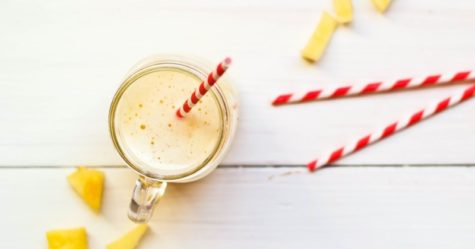
Ginger root has a slew of health benefits ranging from high in antioxidants to being used as a natural remedy for motion sickness or nausea. Ginger is also great for stimulating and aiding in digestion by breaking down food so that nutrients can be absorbed quicker.
Pineapple and apples also have wonderful cleansing properties, especially if you are feeling sick, as they are packed with vitamin C and magnesium. Vitamin C helps to support your immune system with antioxidants, while magnesium is essential for muscle and nerve function. Basically, just what the doctor ordered this fall season!
Ingredients
- 3/4 small pineapple
- 1 1/2 apples
- 1/4 piece of a thumb of ginger
Instructions
Simply wash and chop the pineapple, apples and ginger and put into your juicer to be juiced. Store in an airtight container (mason jar) and enjoy for the next 3 days!
Found at Raw Food Recipes
Sunshine juice
A naturally sweet and low-glycemic raw, veggie juice that’s packed with ingredients to boost your mood, heart health, improve your blood pressure, and ensure optimal digestion of nutrients!
Ingredients
- 1 head of organic romaine lettuce, washed (or 1 bunch of organic kale)
- 1 organic lemon
- 1 large organic carrot, peeled
- 2 stalks of organic celery
- 1 one-inch knob of ginger root
- 1/2 an organic cucumber (or zucchini)
- (optional): 1/4-1/2 a green apple (or a leftover apple core)
Instructions
Add all the ingredients to the juicer in the order listed and juice. Pour the juice over a glass of ice for a nice and chilled juice, and enjoy! Clean the juicer immediately after (this is much easier to do right now than later). Let the juicer parts dry well and put away for tomorrow.
Found at Raw Food Recipes
Flu-Fighting Beet and Cucumber Juice
This beet and cucumber juice is the perfect drink to have at your side during any flu season. It will give you a boost in energy, as it is packed with flu fighting vitamins and minerals! Aside from all the nutrition this juice generously yields, it actually tastes delicious!
The cucumbers add a refreshing note to the juiced beets, which surprisingly does not have an earthy undertone. Instead the beets are sweet, especially when squeezed with a little lime juice. The lime highlights the sweetness of both the cucumber and beets, leaving you with just a delicious and refreshing juice full of flu fighting nutrients. Give it a try if you’re feeling under the weather, or simply to give your body a boost.
Ingredients
- 2 raw medium beets
- 1½ – 2 medium cucumbers
- juice of 1 lime or lemon ( I use lime)
Instructions
Simply wash and chop the beets and cucumbers and put into your juicer and squeeze in the lime juice. Enjoy right away or store in the refrigerator in an airtight container (mason jar) for the next 3 days!
Found at Raw Food Recipes
Turmeric, Carrot, and Ginger Remedy
Not a fan of straight carrot juice? Try doctoring it up with ginger, turmeric, lemon and honey, which has an enormous side benefit of giving the immune system an even more powerful boost. It’s delicious – potent, refreshing, spicy and sinus-clearing, and a little goes a long way.
Ingredients:
- 8-10 large carrots – peeled if not organic
- 1″ piece ginger or more – peeled if not organic
- 1″ piece fresh turmeric root – peeled if not organic
- 1 lemon
- 1 teaspoon raw honey
Instructions:
Run the carrots, ginger, turmeric and lemon through a juicer. Pour juice into a blender, add the honey and blend until the honey is incorporated. Enjoy.
Notes:
I like to use organic lemons for this juice, so that I can run the peel through the juicer and get its oils and benefits into the tonic. I generally use a bit more than 1″ of ginger for this amount of juice, but I like things really fiery. If you are the same way, add some more ginger.
Found at: Raw Food Recipes
Raw Juice Therapy
Raw juice therapy is a method of treatment of disease through an exclusive diet of juices of fruits and vegetables. It is also known as juice fasting. It is the most effective way to restore health and rejuvenate the body.
During raw juice therapy, the eliminative and cleansing capacity of the organs of elimination, namely lungs, liver, kidneys and the skin, is greatly increased and masses of accumulated metabolic waste and toxins are quickly eliminated. It affords a physiological rest to the digestive and assimilative organs.
After the juice fasting or raw juice therapy, the digestion of food and the utilization of nutrients is vastly improved. An exclusive diet of raw juices of fruits and vegetables results in much faster recovery from diseases and more effective cleansing and regeneration of the tissues than the fasting on pure water.
Dr. Ragnar Berg, a world-renowned authority on nutrition and biochemistry observes:
“During fasting the body burns up and excretes huge amounts of accumulated wastes. We can help this cleansing process by drinking alkaline juices instead of water while fasting.
I have supervised many fasts and made extensive examinations and tests of fasting patients, and I am convinced that drinking alkali-forming fruit and vegetable juices, instead of water, during fasting will increase the healing effect of fasting. Elimination of uric acid and other inorganic acids will be accelerated. And sugars in juices will strengthen the heart.
Juice fasting is, therefore, the best form of fasting. ”
As juices are extracted from plants and fruits, they process definite medicinal properties. Specific juices are beneficial in specific conditions. Besides specific medicinal virtues, raw fruit and vegetable juices have an extraordinary revitalizing and rejuvenative effect on all the organs, glands and functions of the body.
Favorable Effects
The favorable effect of raw juices in the treatment of disease is attributed to the following facts : Raw juices of fruits and vegetables are extremely rich in vitamins, minerals, trace elements, enzymes and natural sugars. They exercise beneficial effect in normalizing all the body functions. They supply needed elements for the body’s own healing activity and cell regeneration, thereby speeding the recovery.
- The juices extracted from raw fruits and vegetables require no digestion and almost all their vital nutrients are assimilated directly in the bloodstream.
- Raw juices are extremely rich in alkaline elements. This is highly beneficial in normalising acid-alkaline balance in the blood and tissues as there is over-acidity in most conditions of ill-health.
- Generous amounts of easily assimilable organic minerals in raw juices especially calcium, potassium and silicon help in restoring biochemical and mineral balance in the tissues and cells, thereby preventing premature ageing of cells and disease.
- Raw juices contain certain natural medicines, vegetal hormones and antibiotics. For instance, string beans are said to contain insulin-like substance. Certain hormones needed by the pancreas to produce insulin are present in cucumber and onion juices. Fresh juices of garlic , onions, radish and tomatoes contain antibiotic substances.
Precautions
Certain precautions are, however, necessary in adopting an exclusive diet of raw juices. Firstly, all juices should be made fresh immediately before drinking. Canned and frozen juices should not be used. It will be advisable that one should have one’s own juicer for extracting fresh juices.
Secondly, only fresh ripe fruits and vegetables, preferably organically grown, should be used for extraction of juices.
Thirdly, only as much juice as needed for immediate consumption should be extracted. Raw juices oxidize rapidly and lose their medicinal value in storage, even under refrigeration.
Fourthly, the quality of the juices has a distinct bearing on the results obtained. In case of incomplete extraction of juices, their effective power is proportionately reduced due to the absence of the vitamins and enzymes which are left behind in fiber and the pulp.
Finally, if juices are too sweat they should be diluted in water on 50 : 50 basis or mixed with other less sweet juices. This is especially important in some specific conditions such as diabetes, hypoglycemia, arthritis and high blood pressure.
The Six Main Types of Juices
Fruit and vegetable juices may be divided into six main types. These are :
- Juices from sweet fruits such as prunes and grapes
- Juices from sub-acid fruits like apple, plum, pear, peach, apricot and cherry
- Juices from acid fruits like orange, lemon, grapefruit, strawberry and pineapple
- Juices from vegetable fruits, namely, tomato and cucumber
- Juices from green leafy vegetables like cabbage, celery, lettuce, spinach, parsley and watercress
- Juices from root vegetables like beetroot, carrot, onion, potato and radish. Generally speaking, fruit juices stir up toxins and acids in the body, thereby stimulating the eliminative processes.
Vegetable juices, on the other hand, soothe the jaded nerves and work in a much milder manner. They carry away toxic matter in a gentle way. Owing to their differing actions fruit and vegetable juices should not be used at the same time or mixed together. It is desirable to use juices individually. In any case not more than three juices should be used in any one mixture.
Rules For Mixing Juices
The following broad rules apply when using mixtures of juices. Juices from sweet fruits may be combined with juices of sub-acid fruits, but not with those of acid fruits, vegetable fruits or vegetables.
- Juices from sub-acid fruits may be combined with juices of sweet fruits, or acid fruits, but not with other juices.
- Juices from acid fruits may be combined with those of sub-acid fruits or vegetable fruits, but not with other juices.
- Juices from vegetable fruits may be combined with those of acid fruits or of green leafy vegetables, but not with other juices.
- Juices from green leafy vegetables may be combined with those of vegetable fruits or of the root vegetable, but not with other juices.
- Juices from root vegetables may be combined with those of green leafy vegetables, but not with other juices. A proper selection of juices in treating a particular ailment is very essential.
Thus, for instance, juices of carrot, cucumber, cabbage and other vegetables are very valuable in asthma, arthritis and skin disease, but juices of orange and mosambi aggravate their symptoms by increasing the amount of mucus.
Treatment of Diseases
Some common ailments and fruit and vegetable juices found beneficial in their treatment are mentioned below :
- Acidity : Grapes, orange, mosambi, carrot and spinach.
- Acne : Grapes, pear, plum, tomato, cucumber, carrot, potato and spinach.
- Allergies : Apricot, grapes, carrot, beet and spinach.
- Arteriosclerosis : Grapefruit, pineapple, lemon, celery, carrot, lettuce, and spinach.
- Anemia : Apricot, prune, strawberry, red grape, beet, celery, carrot and spinach.
- Arthritis : Sour cherry, pineapple, sour apple, lemon, grapefruit, cucumber, beet, carrot, lettuce and spinach.
- Asthma : Apricot, lemon, pineapple, peach, carrot, radish and celery.
- Bronchitis : Apricot, lemon, pineapple, peach, tomato, carrot, onion and spinach.
- Bladder Ailments : Apple, apricot, lemon, cucumber, carrot, celery, parsley and watercress.
- Colds : Lemon, orange, grapefruit, pineapple, carrot, onion, celery and spinach.
- Constipation : Apple, pear, grapes, lemon, carrot, beet, spinach and watercress.
- Colitis : Apple, apricot, pear, peach, pineapple, papaya, carrot, beet, cucumber and spinach.
- Diabetes : Citrus fruits, carrot, celery, lettuce and spinach.
- Diarrhea : Papaya, lemon, pineapple, carrot and celery.
- Eczema : Red grapes,carrot, spinach, cucumber and beet.
- Epilepsy : Red grapes, figs, carrot, celery and spinach.
- Eye Disorders : Apricot ,tomato, carrot, celery, parsley and spinach.
- Gout : Red sour cherries, pineapple, tomato, cucumber, beet, carrot, celery and spinach.
- Halitosis : Apple, grapefruit, lemon, pineapple, tomato, carrot, celery and spinach.
- Headache : Grapes, lemon, carrot, lettuce and spinach.
- Heart Disease : Red grapes, lemon, cucumber, carrot, beet and spinach.
- High blood pressure : Grapes, orange, cucumber, carrot and beet.
- Influenza : Apricot, orange, lemon , grapefruit, pineapple, carrot, onion and spinach.
- Insomnia : Apple, grapes, lemon, lettuce , carrot and celery.
- Jaundice : Lemon, grapes, pear, carrot, celery, spinach, beet and cucumber.
- Kidney Disorders : Apple, orange, lemon, cucumber, cucumber,carrot, celery, parsley and beet.
- Liver ailments : Lemon, papaya, grapes, carrot, tomato, beet and cucumber.
- Menstrual Disorders :Grapes, prunes, cherry, spinach, lettuce turnips and beet.
- Menopausal Symptoms : Fruits and Vegetables in season.
- Neuritis : Orange, pineapple, apple, carrot and beet.
- Obesity : Lemon, grapefruit, orange, cherry, pineapple, papaya, tomato, beet, cabbage, lettuce, spinach and carrot.
- Piles : Lemon, orange, papaya, pineapple, carrot, spinach, turnip and watercress.
- Prostate Troubles : All fruit juices in season, carrot, asparagus, lettuce and spinach.
- Psoriasis : Grapes, carrot, beet, and cucumber.
- Rheumatism : Grapes, orange, lemon, grapefruit, tomato, cucumber, beet, carrot and spinach.
- Stomach Ulcers : Apricot, grapes, cabbage and carrot.
- Sinus Trouble : Apricot, lemon, tomato, carrot, onion and radish.
- Sore Throat : Apricot, grapes, lemon, pineapple, prune, tomato, carrot and parsley.
- Tonsillitis : Apricot, lemon, orange, grapefruit, pineapple, carrot, spinach and radish.
- Varicose Veins : Grapes, orange, plum, tomato, beetroot carrot and watercress.
When on a raw juice therapy, the prescribed juice should be drunk every three hours. One can thus take juices five to six times a day. A glass of water mixed with lemon juice and 20 to 30 grams of honey may be taken first thing in the morning on arising. Thereafter, the prescribed juice may be taken at three-hourly intervals.
The quantity of juice on each occasion may be 250 ml on the first day. This quantity may be increased by 50 ml each succeeding day till one takes 600 ml on each occasion. The juice diet can be continued for 30 to 40 days without any ill-effects.
The patient should take adequate rest during the raw juice therapy. Raw juices act as a cleansing agent and start eliminating toxins and morbid matter from the system immediately. This often results in symptoms such as pain in the abdomen, diarrhea, loss of weight, headache, fever, weakness, sleeplessness and bad breath.
These reactions, which are part of the cleansing process, should not be suppressed by the use of drugs. They will cease when the body is able to expel all toxins. After the raw juice therapy, the return to normal balanced diet should be gradual, and in stages. In the beginning, two juice meals may be replaced by milk and fruits. Then gradually juice meals may be substituted by a balanced-diet.
The Role of Enzymes in Nutrition
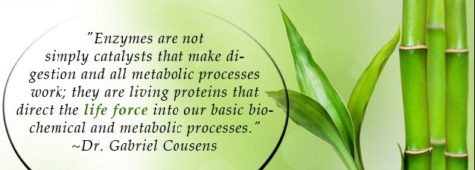
Enzymes are chemical substances produced in the living organism. They are marvelous organic catalysts which are essential to life as they control all the chemical reactions that take place in a living system. Enzymes are part of all living cells, including those of plants and animals. The term enzyme, which literally means in yeast’, was coined following the demonstration of catalytic properties of yeast and yeast juices.
Although enzymes are produced in the living cell, they are not dependent upon the vital processes of the cell and work outside the cell. Certain enzymes of yeast, for instance, when expressed from the yeast cells are capable of exerting their usual effect, that is, the conversion of sugar to alcohol.
A striking feature of enzymes is that while they enter into chemical reaction, they remain intact in the process. They however, act with maximum efficiency at a certain temperature. Lowering the temperature below or raising it above this level slows the reaction. A high degree of heat, that is above 60 o C, permanently destroys their action.
It has been estimated that there are over 20,000 enzymes in the human body. This estimate is based on the number of bodily processes that seem to require action. However, so far only about 1,000 enzymes have been identified. But their great role in nutrition and other living processes has been firmly established.
They are protein molecules made up of chains of amino acids. They play a vital role and work more efficiently than any reagent concocted by chemists. Thus for instance, a chemist can separate proteins into their component amino acids by boiling them at 166 o C for over 18 hours in a strong solution of hydrochloric acid, but the enzymes of the small intestines can do so in less than three hours at body temperature in a neutral medium.
A feature which distinguishes enzymes from inorganic catalysts is that they are absolutely specific in their actions. This means that a particular enzyme can cause reactions involving only a particular type of substance or a group of closely related substances. The substance on which the enzyme acts is known as “substrate”. The specificity of an enzyme is, however, related to the formation of the enzyme-substrate complex which requires that the appropriate groupings of both substrate and enzyme should be in correct relative position. The substrate must fit the enzyme like a key fits its lock.
Enzymes which are used in the cells which make them are called intracellular enzymes. Enzymes which are produced in cells which secrete them to other parts of the body are known as extracellular enzymes. Digestive juices are an example of the latter type.
Nomenclature
There are few enzymes whose names have been established by long usage such as ptyalin, pepsin, trypsin and erepsin. Apart from these, enzymes are usually named by adding the suffixes to the main part of the name of the substrate upon which they act. Thus amylases act upon starch (amylum), lactase acts upon lactose, lipases act upon lipids, maltase acts upon maltose and protesses act upon lipids, maltase acts upon maltose and protesses act upon proteins.
There are, however, several enzymes which act upon many substances in different ways. These enzymes are named by their functions rather than substrates. Thus, an enzyme which causes deaminations is called a deaminase and oxidizing enzyme an oxidase.
Some enzymes work efficiently only if some other specific substance is present in addition to substrate. This other substance is known as an “activator” or a “con-enzyme” . “Acti- vators” are usually inorganic ions. They increase the activity of a complete enzyme and may take part in the formation of the enzyme-substrate complex.
Many of the con-enzymes are related to vitamins. This explains why vitamin deficiencies profoundly alter metabolism. Thus, for instance, thiamine, as thiamine pyrophosphate, functions as a con-enzyme in at least 14 enzymes systems. Con-enzymes, like enzymes, are being continuously regenerated in the cells.
Enzymes play a decisive role in the digestion of food as they are responsible for the chemical changes which the food undergoes during digestion. The chemical changes comprise the breaking up of the large molecules of carbohydrates, fats and proteins into smaller ones or conversion of complex substances into simple ones which can be absorbed by the intestines. They also control the numerous reactions by which these simple substances are utilized in the body for building up new tissues and producing energy.
The enzymes themselves are not broken down or changed in the process. They remain as powerful at the end of a reaction as they were at the beginning. Moreover, very small amounts can convert large amounts of material. They are thus true catalysts.
The process of digestion begins in the mouth. The saliva in the moth, besides helping to masticate the food, carries an enzyme called ptyalin which begins the chemical action of digestion. It initiates the catabolism (breakdown) of carbohydrates by converting starches into simple sugars. This explains the need for thorough mastication of starchy food in the mouth. If this is not done the ptyalin cannot carry out its functions as it is active in an alkaline, neutral or slightly acid medium and is inactivated by the highly acid gastric juices in the stomach.
Although enzymatic action starts while food is being chewed, digestion moves into high gear only when the chewed food has passed the esophagus and reached the stomach. While the physical action of peristalsis churns and kneads solid food into a semi-solid amorphous mixture called chyme, this mixture undergoes chemical changes initiated by gastric juices secreted by the walls of the stomach. These juices include mucus for lubricating the stomach, hydrochloric acid and gastric juice.
The enzyme or active principle of the gastric juice is pepsin. This enzyme in combination with hydrochloric acid starts the breakdown of proteins into absorbable amino acids called polypeptides. An additional enzyme, rennin, plays an important role in the stomach of the infant. It curdles milk and allows the pepsin to work upon it. The gastric juice has no effect upon starches or fats. When the chyme leaves the stomach and enters the small intestine through the pylorus – the lower escape valve, it still contains much food which is in the form of raw material not yet ready for absorption in the body.
Digestion is completed inside the small intestine by several juices. From liver comes a liquid called bile which converts fat globules into a smooth emulsion. The pancreas contributes various enzymes which continue the breakdown of proteins, help to divide starch into sugars and work with bile in digesting fats. The small intestine itself secretes enzymes from its inner wall to complete the reactions.
When all the enzymes have done their work, the food is digested and rendered fit for absorption by the system.The following table briefly summarizes the chemical digestion of carbohydrates, fats and proteins by various enzymes:
Enzymes form part of the food we eat. Raw foods contain enzymes in abundance; cooking, pasteurizing, pickling, smoking and other processing denature enzymes. It is, therefore, essential to include in our diet, substantial amount of raw foods in the form of fruits, raw salads and sprouts. Studies have revealed that the body without sufficient raw materials from raw foods, may tire and produce fewer enzymes year after year. This may lead to wearing out of body processes and consequent worn-out looks.
Lecithin – An Amazing Youth Element
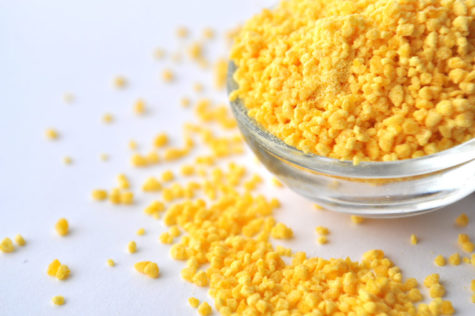
Lecithin is the most abundant of the phospholipids. It is a fatty food substance, which serves as a structural material for every cell in the body. It is an essential constituent of the human brain and nervous system. It forms 30 per cent of the dry weight of the brain and 17 per cent of the nervous system.
Lecithin is also an important component of the endocrine glands and the muscles of the heart and kidneys. It makes up 73 per cent of the total liver fat. Nervous, mental or glandular over activity can consume lecithin faster than its replacement. This may render a person irritable and exhausted. It is, therefore, of utmost importance to add lecithin to the diet, if the body’s own supply decreases as in old age or working under stress.
Rich Sources
Lecithin is derived from the Greek Word, likithos, meaning egg yolk. Egg yolk is a rich source of lecithin, and also a rich source of cholesterol. This combination makes it possible for the lecithin to emulsify the cholesterol. Vegetable oils, whole grain cereals, soy beans, liver and milk are other rich sources of lecithin.
The cells of the body are also capable of synthesizing it as needed, if several of the B vitamins are present. Since these B vitamins are generally removed when grains are refined, people who eat exclusively white flour products are lacking them.
Benefits
The action of lecithin on the heart is the most important of all its proved benefits. It achieved its popularity initially in this area. Cholesterol is a fatty substance that tends to collect in the walls of the arteries and veins, thus narrowing them. This may eventually lead to a fatal blood clot. Scientific studies have shown that lecithin has the ability to break up cholesterol into small particles which can be easily handled by the system. With sufficient intake of lecithin, cholesterol cannot build up against the walls of the arteries and veins.
Like cholesterol, lecithin is continuously produced in the liver, passes into the intestine with bile and is absorbed in the blood. It helps in the transportation of fats. It also helps the cells to remove fats and cholesterol from the blood and to utilize them. It increases the production of bile acids made from cholesterol, thereby reducing the amount in the blood. It will thus be seen that cholesterol can cause trouble only if lecithin is lacking in the system.
All atherosclerosis or changes in the arterial walls are characterized by an increased of the blood cholesterol and a decrease in lecithin. It has been shown that experimental heart disease, produced by feeding cholesterol, could be prevented merely by giving a small quantity of lecithin. Atherosclerosis has been produced in various species of animals by increasing the blood cholesterol or decreasing the lecithin.
In normal health, when a diet high in fat is taken, there is tremendous increase in the production of lecithin. This helps in changing the fat in the blood from large particles to smaller and smaller ones. In case of atherosclerosis, however, the lecithin in the blood remains very low regardless of the quantity of fat entering the blood. The result is that, the fat particles remain too large to be able to pass through the arterial walls.
A more serious situation can develop if there is lack of lecithin in cells also. Besides reducing the cholesterol level in the blood, there is mounting scientific evidence to suggest several other benefits from lecithin. It has been suggested that its intake in sufficient amounts can help rebuild those cells and organs which need it. Lecithin helps to maintain their health once they are repaired. It may mean that a deficiency of lecithin in the diet may be one of the causes of ageing and that its use may be beneficial in retarding the ageing process.
Edward R. Hewith in his book, The Years Between 75 and 90 says:
” with older people the fats remain high in the blood for from five to seven hours and in some cases as long as 20 hours, thus giving the fats more time to become located in the tissues. If lecithin is given to older people before a fatty meal, it has been found that the fats in the blood return to normal in a short time, in the same way they do in younger people.”
In some cases, the cosmetic effect of lecithin does as much for the mental outlook of persons as it does for their physical well-being. It has been found to eliminate the yellow or yellow- brown plaques on the skin or around the eyes caused by fatty deposits. It is a natural tranquilizer which is beneficial in nervous exhaustion. It can produce great alertness in elderly people.
Some studies have indicated that lecithin increases the gamma globulin in the blood. This helps fight infection. It provides an increased immunity against pneumonia. It has also been found to lower blood pressure in some people. In combination with vitamin E, it has proved helpful in lowering the requirements of insulin in diabetics. It has also proved valuable in the treatment of certain skin ailments, including acne, eczema and psoriasis.
Lecithin has been suggested as a sexual aid. It was used in Germany 30 years ago as a restorative of sexual powers, for glandular exhaustion and nervous and mental disorders. Seminal fluid is rich in lecithin. Because of its loss from the body, its need for men is regarded as specially great. Its use is also considered valuable in minimizing pre-menstrual and menopausal tension.
Dr. N.A. Ferri, an eminent physician remarks:
“Lecithin has a versatile function in life. It is an extremely important factor in the digestion and oxidation of fats, thus creating more muscle and glandular activity, resulting in greater body exertion and less fat accumulations.
Lecithin is essential not only for tissue integrity of the nervous and glandular system in all living cells, but has been regarded as also the most effective generator and regenerator of great physical, mental and glandular activity.
Shattered nerves, depleted brain power, waning activity of vital glands, find in lecithin, especially in the cellular structure of the nervous system and endocrine glands a source of dynamic energy.”
The best way to increase lecithin is to eat the same amount of fat as usual, but reduce animal fat except that from fish. Oil may be used for cooking, seasoning and salad dressing. All hydrogenated fats such as margarine, cooking fats, hydrogenated peanut butter and processed cheese should be avoided as also foods prepared with them.
